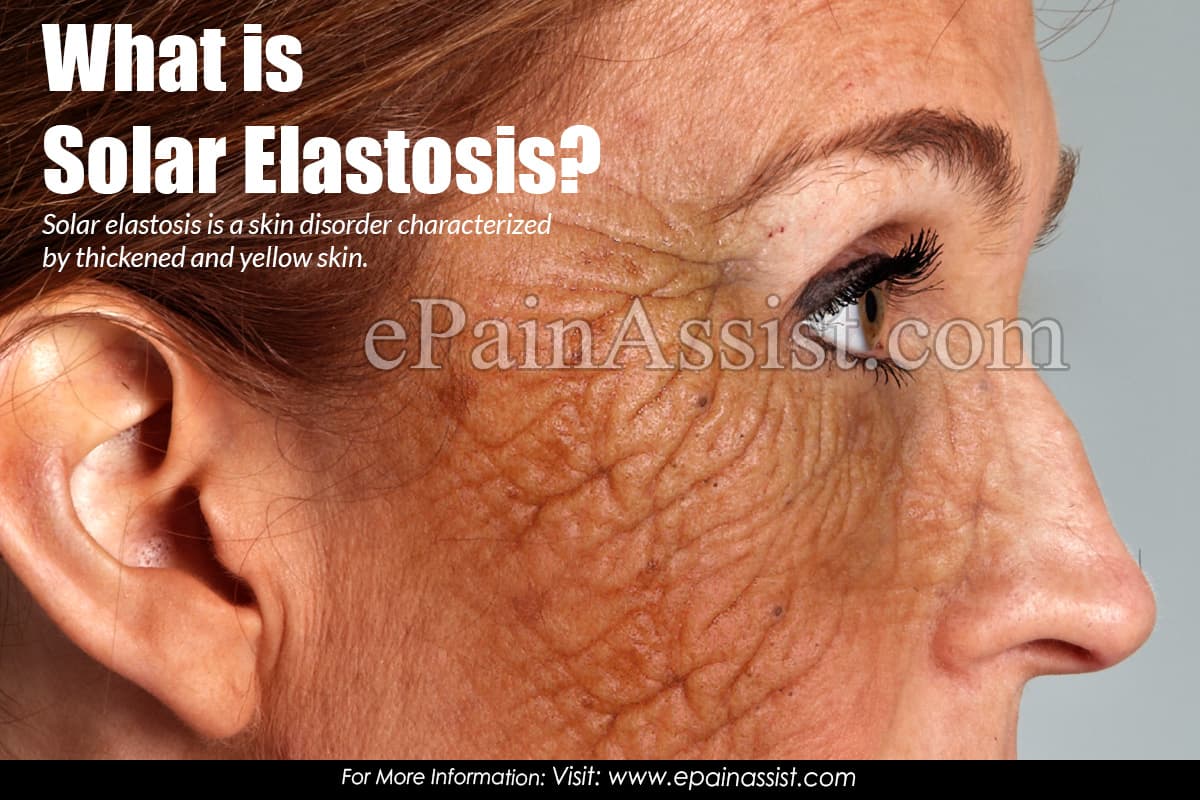What is Solar Elastosis?
Solar elastosis is a skin disorder characterized by thickened and yellow skin. This occurs because of the buildup of elastic tissue in the skin. The cause of solar elastosis is persistent and prolonged sun exposure (photo-aging). Solar elastosis is also known as Actinic Elastosis.

What Causes Solar Elastosis?
The cause of the solar elastosis is excessive and persistent exposure of the skin to the sun. The reason why there is accumulation of the elastin material on the skin from the sun exposure is still not clear. According to studies, it is thought that the buildup of elastin in solar elastosis is due to actinic stimulation of fibroblasts, which triggers the synthesis of elastin. Another thought is that the material could be a degradation product of elastin, collagen or both.
Who Are At Risk For Getting Solar Elastosis?
People who undergo long term and excessive sun exposure are at high risk for getting affected with solar elastosis. Solar elastosis is a characteristic feature of photo-aging. Solar elastosis can affect people with any skin type; however, the yellow hue of solar elastosis is more obvious in white skinned people. Smoking causes premature skin ageing which can manifest as solar elastosis.
Pathophysiology of Solar Elastosis
There is proliferation of the elastic fiber seen in the skin dermis in the initial stages of solar elastosis. As solar elastosis progresses, the collagen fibers present in reticular dermis and papillary dermis become quickly replaced by curled and thickened fibers resulting in formation of tangled masses.
What are the Symptoms of Solar Elastosis?
The skin in solar elastosis appears thick, yellow with the presence of furrows, bumps or wrinkles.
How is the Diagnosis of Solar Elastosis Made?
The diagnosis of solar elastosis can be made with its distinctive appearance of yellow and thickened skin. Solar elastosis can also be diagnosed by performing a skin biopsy.
How to Prevent Solar Elastosis?
To prevent solar elastosis or to reduce it, patient should avoid or cut down on the sun exposure. When stepping out in the sun, it is important to apply sunscreen with a minimum SPF 50, which should be reapplied every 2 hours of sun exposure.
To prevent solar elastosis, other than the use of sunscreen, always wear clothes which cover your skin, such as hat, long sleeved shirts and pants. Smokers should quit smoking and also avoid exposure to passive smoke to prevent solar elastosis.
What is the Treatment of Solar Elastosis?
Treatment options for the photo-aged skin in solar elastosis have variable efficacy and include:
- Topical application of retinoic acid.
- Hyaluronic acid injection into the dermis.
- Dermabrasion.
- Dermal fillers.
- Carbon dioxide laser resurfacing.
- Topical estrogen therapy.
- Tacrolimus ointment.
- Ablative and non-ablative laser treatments.
- Neurotoxin injections (botulinum toxin).
All these treatments help in improving the cosmetic appearance of the skin affected by solar elastosis.
